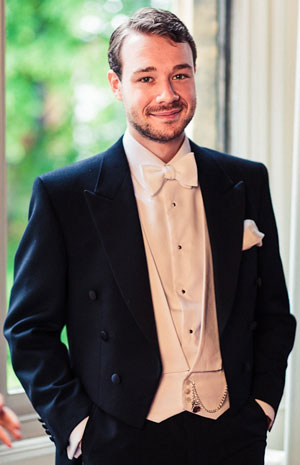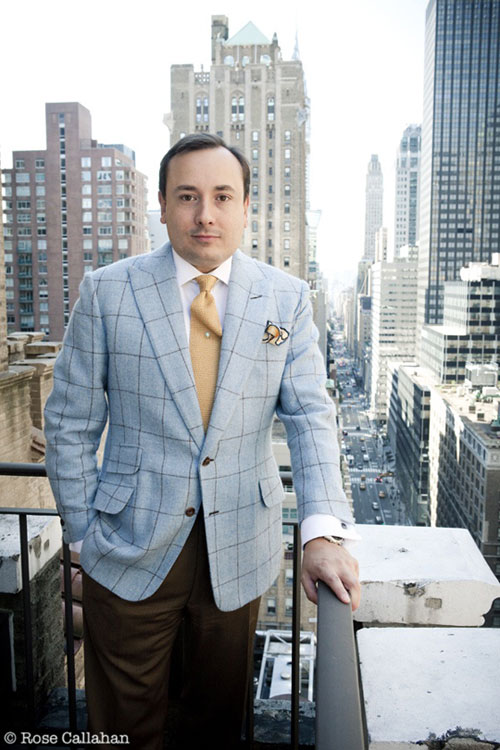For my first post on Mensflair, I thought I’d introduce myself by opening up for discussion something that I’ve been pondering for quite a while now; differences between House Styles in London tailors. Anyone with a vague interest in sartorial dress will be familiar with the fact that British, American, Parisian and Italian tailors all tend to produce suits slightly differently, using different shapes and degrees of structure in their garments. However, in my personal experience, these national differences are far overshadowed by the wealth of striking individual differences discernable between different tailors in London alone.
 Personally, I think that this divergence in tailoring house styles is a wonderful thing. I have always maintained that one of the joys of bespoke tailoring is the fact that it’s an intensely personal experience for both craftsman and customer. What you may not necessarily realise at first glance though, is just how much a bespoke garment will be influenced by the ‘house style’ of the tailors a customer works with. Different tailors train their staff in their own particular way of doing things, by which of course I mean making bespoke garments. These differences manifest themselves in various ways throughout the construction process, and will ultimately produce suits that look and feel extremely different. No two lapel shapes in London are precisely the same, and this is a principle which can extend to each and every aspect of a bespoke garment.
Personally, I think that this divergence in tailoring house styles is a wonderful thing. I have always maintained that one of the joys of bespoke tailoring is the fact that it’s an intensely personal experience for both craftsman and customer. What you may not necessarily realise at first glance though, is just how much a bespoke garment will be influenced by the ‘house style’ of the tailors a customer works with. Different tailors train their staff in their own particular way of doing things, by which of course I mean making bespoke garments. These differences manifest themselves in various ways throughout the construction process, and will ultimately produce suits that look and feel extremely different. No two lapel shapes in London are precisely the same, and this is a principle which can extend to each and every aspect of a bespoke garment.Chittleborough and Morgan’s highly structured, flamboyant style. House style, to my mind, presents simultaneously a wealth of benefits, and difficulties, both for the bespoke tailoring industry (and particularly Savile Row) and its customers. It adds a level of choice that would otherwise not be there for the customer, and provides a greater opportunity to get things right and to find a place which can deliver the kind of tailoring that appeals to you. Choosing a tailor because their house style is right for you, adds a more personal element to the bespoke experience, and will doubtless make for a closer relationship with your tailor than otherwise – which is worth its weight in gold, considering that one individual is likely to overview the entire construction process of your garments with you in mind.
 It can however, present a problem. Whilst house style can differentiate tailors quite clearly, it can also provide a sense for the customer that the firm is inflexible or limited in what it offers. It can also make choosing a tailor a bewildering and off-putting process. Before settling upon my own tailors The Cad & the Dandy (who I chose primarily because of their flexibility and the fact that they were prepared to let me dictate aspects of the block of my own jackets) I visited another West End tailor, who wasted little time in telling me that although they could make what I’d like, I probably would be happier if I went somewhere else. As my first experience of London bespoke tailoring, I found this highly embarrassing and quite baffling.
It can however, present a problem. Whilst house style can differentiate tailors quite clearly, it can also provide a sense for the customer that the firm is inflexible or limited in what it offers. It can also make choosing a tailor a bewildering and off-putting process. Before settling upon my own tailors The Cad & the Dandy (who I chose primarily because of their flexibility and the fact that they were prepared to let me dictate aspects of the block of my own jackets) I visited another West End tailor, who wasted little time in telling me that although they could make what I’d like, I probably would be happier if I went somewhere else. As my first experience of London bespoke tailoring, I found this highly embarrassing and quite baffling.Soft tailoring of Steven Hitchcock. Largely, it’s a question of structure. Certain tailors provide garments which are highly structured with lots of canvass and shaping, which produces a striking cut and almost exaggerated silhouette. Other tailors prefer to cut their garments with a more relaxed shape, displaying a gentle shoulder and waist, with a soft chest canvass that makes for something altogether very comfortable and relaxed in feel. Some tailors pride themselves on their contemporary or minimalist approach to cut and colour, others prefer to produce work of a more flamboyant nature.
I’d recommend that when choosing a tailor for yourself, make sure that you approach a tailor who is willing to chat and listen to what you want to get out of your own garments. Book an initial consultation so that you can do some research and have this discussion properly. I’d advise getting tailors to talk you through their own work, so that you can get a sense of how they make-up their garments, and what their own house style is about. Producing a suit is a time consuming process, so a good tailor will always be willing to give you an hour or so solely to discuss your requirements, without there needing to be any pressure to place an order.
A final question I’d like to pose is how does Savile Row view itself; given that the street hosts such a large concentration of competing tailors who, whilst all being a part of Savile Row, firmly hold to their unique traditions and individual aesthetics? I would at this point like to make it clear that I firmly believe that one of Savile Row’s strongest and most valuable traits is the unique personality of every tailor on the Row and I wouldn’t have its current make-up changed for the world. What I would like to consider in my next piece however, is whether Savile Row as an entity, plays to this strength of variety of house styles as much as it perhaps could do? I wonder whether the individual tailors’ perceptions of Savile Row as a brand name and the Row’s own perception of its style might need a little more of a shake-up than the old guard would have us believe?


No comments:
Post a Comment